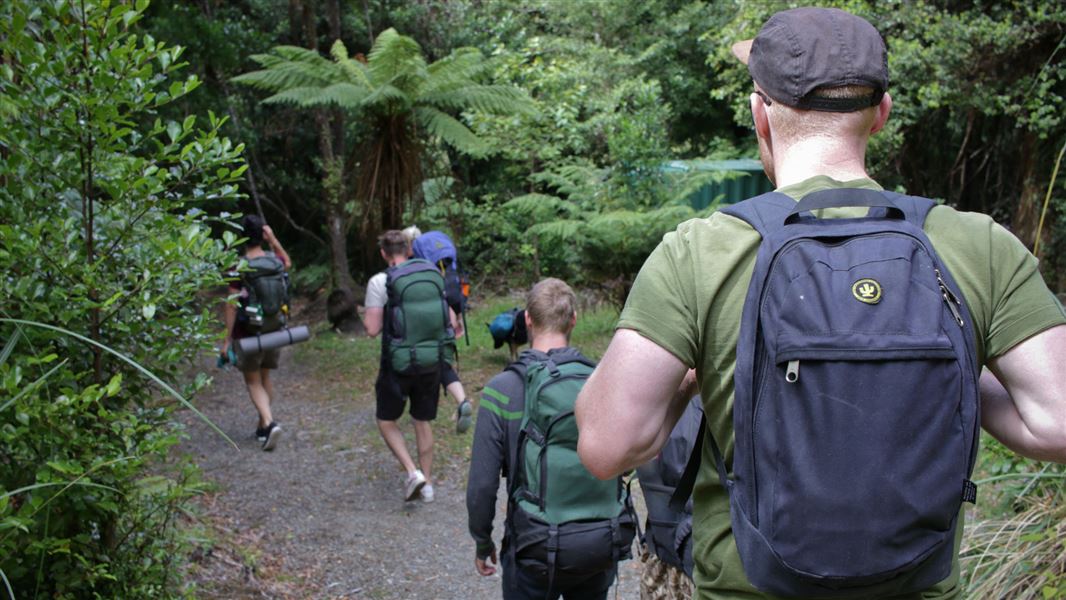Visit Catchpool Valley & Ōrongorongo Valley. Catchpool Valley is the most popular entrance to Remutaka Forest Park with a well-maintained campground in close reach of tracks, picnic sites and swimming spots. It provides access to longer tramps in Ōrongorongo Valley.
Catchpool Centre can be hired for functions, conferences and family events.
Catchpool Valley, 30 km from Wellington, is the most popular entrance to Remutaka Forest Park.
There are also entry points along the Western Lake Road in the Wairarapa - at Cross Creek (the start of the Rimutaka Rail Trail), Waiorongamai Track, Battery Stream/Papatahi Crossing and Ocean Beach.
Dog access
Some parts of the Remutaka Forest Park are closed to dogs to protect North Island brown kiwi released by the Remutaka Forest Park Trust. Look out for signs that mark the areas closed to dogs, and the areas where dogs are allowed. Read about dog access in Remutaka Forest Park.
Vegetation
Geological, tectonic and climatic forces have shaped the vegetation pattern of the Remutaka Range.
Beech forest dominates much of the range, joined by podocarps at lower altitudes, and kamahi, a predominant canopy tree (with emergent trees like rimu, rata, miro, hinau, rewarewa and maire in some areas). The south end of the range, where most of the original forest has been destroyed by fire, is covered at lower altitudes by shrub woods like manuka, tauhini, rangiora and heketara with some emergent hinau and rewarewa.
Wildlife
Eight species of moa once roamed the area which still contains some native birdlife, including bellbirds, tui, kaka, kereru and ruru.
Red deer, goats, pigs and possums are also present. Recreational hunting is encouraged except in the Catchpool Valley, within 200 metres of the Orongorongo River and the Landcare research area where, because of a high level of public use, discharging of firearms is prohibited.
The Remutaka Forest Park Trust began releasing North Island brown kiwi into the park in May 2006. It was the first ever kiwi translocation planned and executed entirely by an independent trust.
Volunteers from the trust and local tramping groups spent two years controlling stoats in a 1000 ha area to provide a safe habitat for the release of up to 20 kiwi from BNZ Kiwi Recovery.
Early Maori used the Remutaka Range as a refuge between tribal wars and a food source. One of their major trails traversed the range between Waiorongomai in the east and Lowry Bay in the west.
Wellington/Kapiti information
| Phone: | +64 3 546 9339 |
| Email: | nelsonvc@doc.govt.nz |
| About: | Whakatū/Nelson Visitor Centre provides visitor information for this area |
